N-terminal modification of cell-free synthesized proteins (acetylation and myristoylation).
The N-terminal modification of nascent proteins, such as acetylation and myristoylation, is one of the most abundant post-translational modifications. N-terminal modification is required for many processes in cells including protein-protein interaction, subcellular localization, and degradation. To analyze the function of the modification, it is important to compare the modified and unmodified proteins under defined conditions. However, it is technically difficult to prepare unmodified proteins because cell-based systems contain endogenous modification systems.
In this study, we performed in vitro acetylation or myristoylation at the N-terminus of a protein synthesized within the PURE system (Product name: PUREfrex®) and succeeded in synthesizing N-terminal modified proteins by synthesizing modifying enzymes simultaneously or adding them after synthesis.
CONTENTS
Protein synthesis with unformylated methionine as an initial amino acid
Formylmethionine is used as the initial amino acid of the nascent protein in E. coli and the PURE system contains a formyl donor, 10-formyl tetrahydrofolate (10-CHO-THF). However, the α-amino residue of the initial methionine must not be formylated for N-terminal modification. First, we investigated whether target proteins used in this study could be efficiently synthesized using the PURE system without 10-CHO-THF. As a result, 10-CHO-THF is not essential for protein synthesis within the PURE system but affects the efficiency of protein synthesis, depending on the properties of each protein, especially its N-terminal sequence.
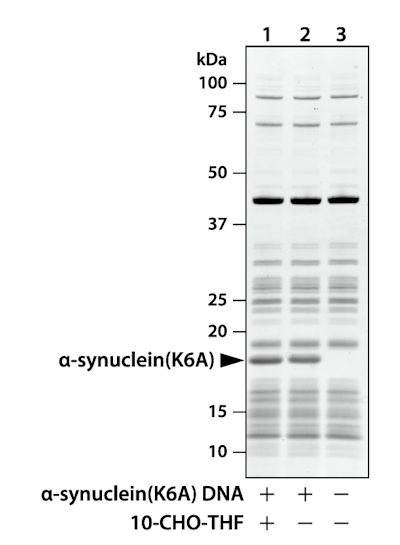
N-terminal acetylation by NatB
Yeast NatB is a heterodimer consisting of yNaa20 (encoded by NAT3) and yNaa25 (encoded by MDM20). NatB catalyzes the transfer of the acetyl residue from acetyl-coenzyme A (acetyl-CoA) to the α-amino residue of an initial methionine of a nascent protein. We synthesized the target protein with or without NatB in the presence of acetyl-CoA, and then detected the acetylated N-terminal peptide only when NatB was present by mass spectrometry.
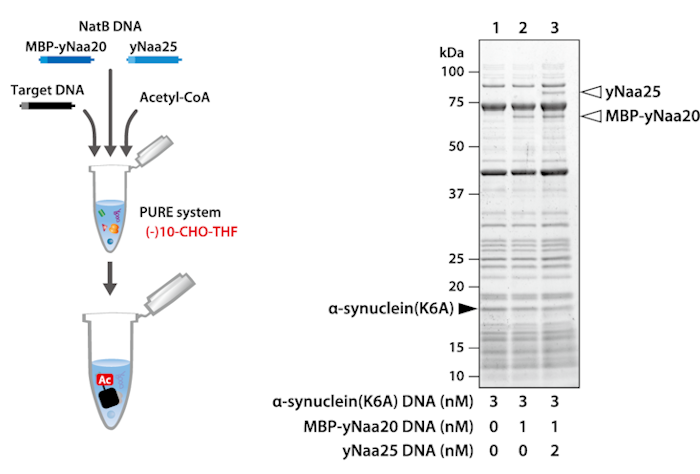
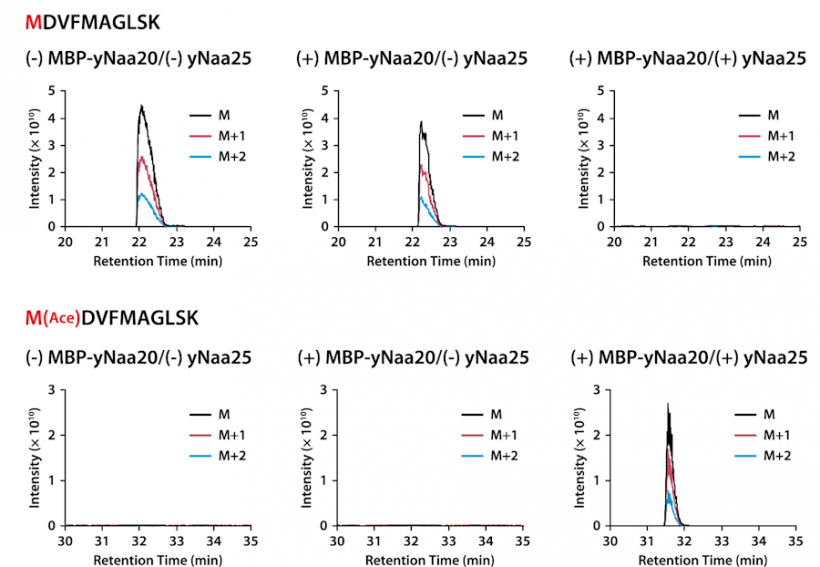
N-terminal acetylation by NatA
Yeast NatA consists of yNaa10 (encoded by ARD1) and yNaa15 (encoded by NAT1). The second amino acid of the target protein is acetylated by NatA after the initial methionine, not formylmethionine, is cleaved by methionine aminopeptidase (MAP). We synthesized the target protein with or without NatA in the presence of MAP and acetyl-CoA, and then detected the acetylated N-terminal peptide only when NatA was present by mass spectrometry.
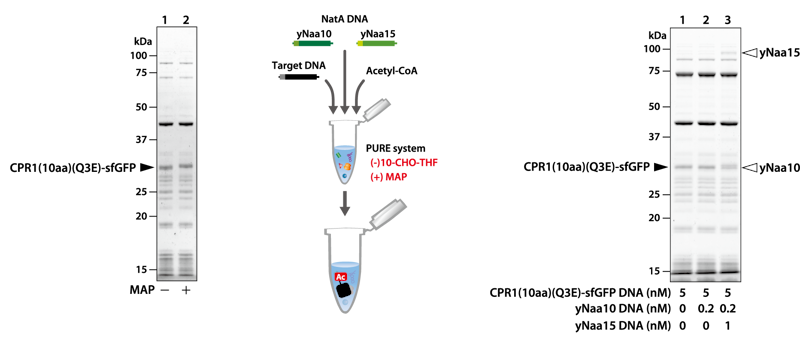
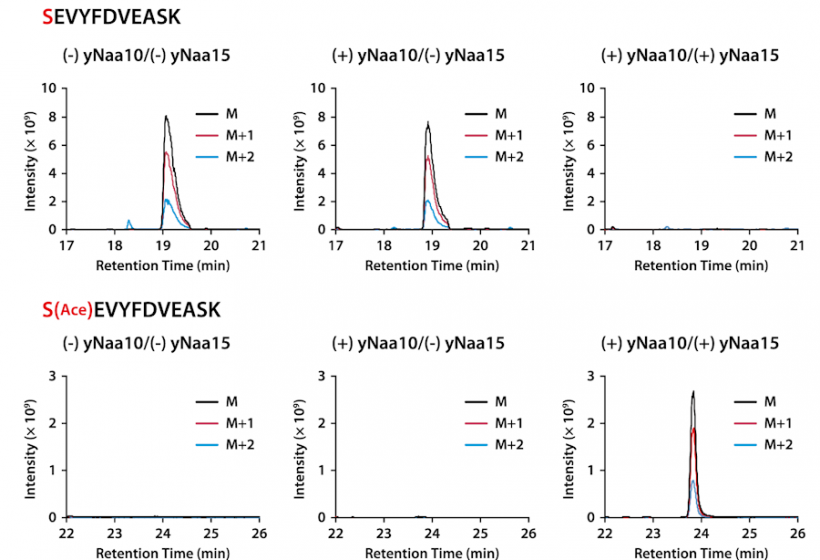
N-terminal myristoylation by NMT
NMT reacts to the second glycine after the methionine-cleavage by MAP, which is similar to the reaction of NatA. Because myristoyl-CoA, which is a substrate for NMT, inhibited protein synthesis, we synthesized the target protein and NMT separately and then mixed them with myristoyl-CoA. The myristoylated peptide was detected only in the presence of NMT by mass spectrometry.
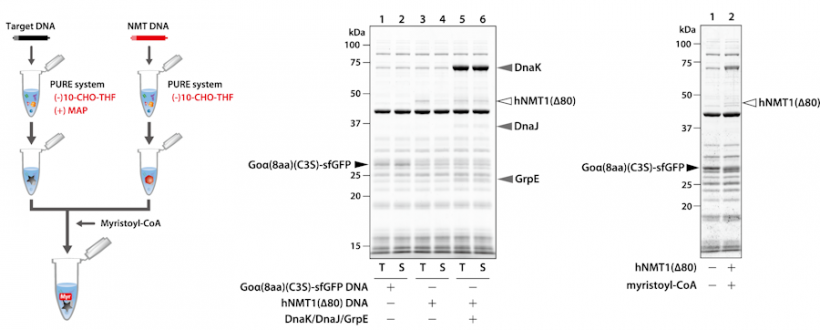

Finally, we observed the localization of the myristoylated target protein to the lipid membrane when the target protein and NMT were mixed with myristoyl-CoA within giant vesicles.
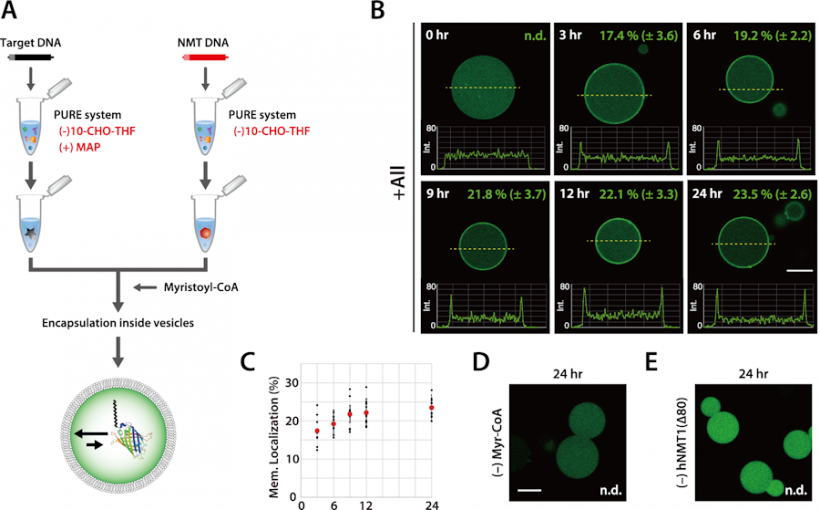
- Schematic of the experimental procedure (A).
- GFP lacking the first methionine was myristoylated by hNMT1(Δ80) in giant vesicles, and the migration of the products to the vesicle membrane was observed (B).
- The ratio of membrane localization of GFP was plotted against the reaction time at 3, 6, 9, 12, and 24 h (C).
- The localization of GFP was not observed when myristoyl-CoA (D) or the hNMT1(Δ80) gene (E) was omitted.
< Conclusion >
In this study, we developed a preparation method for the N-terminal modification of cell-free synthesized proteins using the PURE system. We also synthesized the modifying enzymes using the PURE system and used them without purification. This approach may be useful for evaluating the activity of modifying enzymes without using living cells. Our PURE system-based method can be applied not only to achieve acetylation and myristoylation, but also to other modification.
This research is a collaboration between GeneFrontier, Tokyo Institute of Technology, and the Japan Agency for Marine-Earth Science and Technology (JAMSTEC). The paper has been published in ACS Synthetic Biology and is available for free download at the link below.
ACS Synthetic Biology (2023) 12, 1935-1942.
